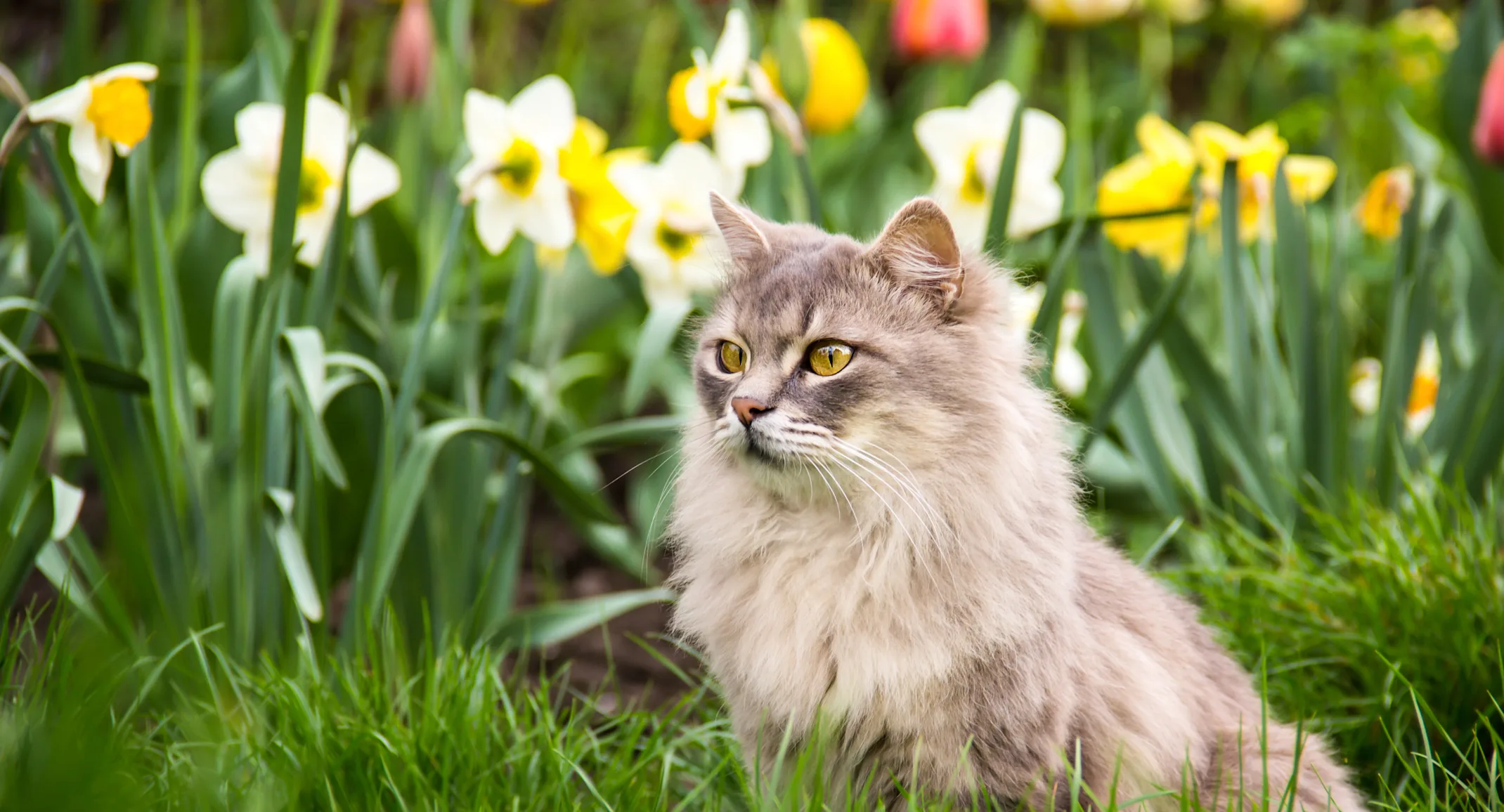For many, lilies symbolize renewal and peace, but these springtime perennials are highly poisonous to cats. As pet owners prepare to beautify their homes and yards with spring greenery, the Mountainside 24/7 Animal Emergency team wants to keep pets safe by providing increased lily toxicity awareness and poison prevention.
Why are lilies toxic to cats?
True lilies (i.e., those belonging to the Lilium or Hemerocallis species) contain toxic compounds in their leaves, stems, petals, and pollen—so each portion is equally dangerous for curious cats. Water in a vase containing cut flowers is also toxic. Once ingested, these compounds damage the kidneys and cause life-threatening acute (i.e., sudden) kidney failure. Although the exact mechanism is unknown, the toxic dose is small—cats who ingest only a minimal amount of a lily can experience potentially fatal poisoning.
What lilies are most dangerous to cats?
The lilies responsible for toxicity in cats are generally the most popular species, such as those found in floral arrangements or given as seasonal gifts. According to the Pet Poison Helpline, they include:
Easter lily (Lilium longiflorum)
Tiger lily (Lilium lancifolium)
Asiatic lily (Lilium asiatica)
Japanese show lily (Lilium speciosum)
Daylilies (Hemerocallis species)
Stargazer lily (Lilium “Stargazer”)
Wood lily (Lilium philadelphicum or umbellatum)
Many plants with “lily” in their name aren’t actually from the lily family (e.g., Peace lily, Calla lily, and Lily of the Valley), making identifying poisonous plants a challenge. However, because cats who ingest—or merely nibble on—most non-lilies also suffer other harmful side effects such as gastrointestinal (GI) upset, the Mountainside 24/7 Animal Emergency team recommends keeping all harmful plants out of your cat’s reach.
What are lily toxicity warning signs in cats?
Early signs generally appear in the first 12 hours after ingestion—sometimes less than one to three hours—as cats become nauseous and suffer GI discomfort. These initial signs include:
Drooling
Vomiting
Lethargy
Appetite loss
As kidney damage progresses, urinary tract-related signs become more apparent, including:
Increased urination
Increased thirst
Dehydration (e.g., dry gums, loss of skin elasticity over the shoulders, weakness)
Affected cats experience progressive weakness and metabolic dysfunction as kidney function declines. Although rare, seizures and mentation changes can also occur. The deterioration is rapid, and total kidney failure occurs 24 to 72 hours after ingestion. Without immediate treatment, coma and death can occur in days.
What should I do if my cat ingests a lily or shows lily toxicity signs?
Prompt veterinary attention is critical to ensure a positive outcome for your cat. If you know or suspect your cat has ingested any lily part, do not wait for illness signs—immediately contact Mountainside 24/7 Animal Emergency. Our team will most likely recommend you bring your cat to our facility for urgent care. If possible, bring a picture of the flower or plant in question so that our team can confirm its species. Do not induce vomiting in your cat or administer anything by mouth before arrival.
Can cats recover from lily toxicity?
Lily toxicity is a time-sensitive veterinary emergency. Because toxic changes can cause rapid kidney damage, delayed treatment can result in permanent organ damage and failure.
Lily toxicity treatment will depend on your cat’s condition when you arrive. If the ingestion was recent, your veterinarian will initiate measures to induce vomiting and block toxin absorption, which is known as decontamination, and can help prevent or reduce the quantity of toxins from reaching the kidneys. They will perform baseline blood work and urine testing to assess your cat’s kidney function and provide appropriate treatment. They will also initiate dialysis (i.e., intravenous [IV] fluids) to flush any circulating toxins from the bloodstream and accelerate filtration through the kidneys. Additional medications are often necessary to ease nausea, protect the GI tract, and enhance dialysis by pulling fluid from other body areas. Repeat blood and urine testing is necessary to determine if the treatment is effective.
Responsive cats generally show improvement after several days of hospitalized treatment and can make a full recovery. Sadly, cats who do not receive prompt treatment generally have a poorer outcome and euthanasia is sometimes necessary to prevent prolonged suffering.
How can I protect my cat from lily poisoning?
Lily toxicity in cats can be a heartbreaking tragedy, yet is almost completely preventable. In addition to a quick response to known or suspected lily ingestion, you can take many steps that will protect your cat and limit their exposure, such as:
Familiarizing yourself with toxic lily species and other pet-toxic plants
Replacing harmful plants with pet-friendly alternatives or relocating toxic houseplants to pet-inaccessible areas
Inspecting floral arrangements and gift bouquets for lilies and other poisonous plants before displaying them in your home
Replacing outdoor lilies and other harmful plants with pet-safe alternatives
Installing a pet-proof fence or barrier around outdoor lily displays
Educating family and friends about lily toxicosis in cats
Posting veterinary emergency contact information in an easily accessible area and saving important numbers in your cell phone, including our main phone number and the Pet Poison Helpline.
Lilies add color and tranquility to spring landscapes, but their serene beauty is not worth your pet’s health and safety, so ensure you protect your curious cat from problematic plants. If you are concerned that your cat is suffering lily poisoning or another emergency situation, immediately contact our Mountainside 24/7 Animal Emergency team.

